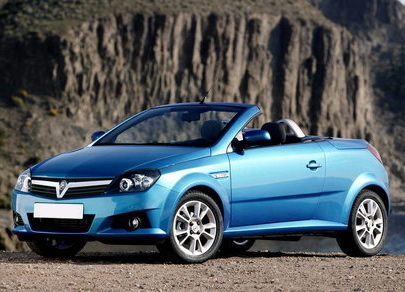Vauxhall
By Shenron on Nov 28, 2008 with Comments 0
Vauxhall was founded in Vauxhall, which is in London in 1857. The company started out not as an automotive company, since the car had not yet been invented, but instead as a pump building and ship engine company. It was not until 1903 that the first car was built by the company. This first car had a five horsepower engine and used two forward gears, but lacked the ability to go in reverse. The expansion of its production quickly came soon after, and was moved to a placed called Luton in 1905, following success with its sports-styled models of vehicles. After World War One the company focused more on the luxury based and otherwise higher class vehicles that were popular of the time until GM bought them outright for 2.5 million in 1925 – four years before the bottom fell out of the market and it all went to hell in a hand-basket. Indeed after this market crash Vauxhall suffered until World War Two when production of vehicles was suspended in favor of producing tanks for the war effort.
After the war ended the models designed were a simple nature and were meant for easy mass production, this allowed for a larger expansion of sales and of market share, allowing further expansion throughout the 50’s and 60’s. As more families started and more people could afford the better cars Vauxhall’s sales were up, however misfortune was around the bend. During that time many of their vehicles were undercoated and rusted, and the reputation of a rusty wrecker stuck with them for years, well into the 1980s. During the beginning of the 1970s the sales were up, and then they went down because of a perceived out datedness of design. Furthermore without keeping up pace Ford was gaining ground along with British Leyland. In response Vauxhall launched the Chevette and the Cavalier, allowing them to close the gap and regain lost ground. As the decade closed they again redesigned and went with a hatchback and tried to appeal to the family market which was more prone to buy these. After this it overtook Rover. In 1981 their most successful car during the 80s was unleashed, the 1981 MK2 Cavalier. This car was different in that not only was it a hatchback but it also had front wheel drove and because it was innovative it was seen as modern – something they strived for. Sales bounded forward, and in 1983 the Nova was also released, creating a reputation as a cutting edge company. By the close of this decade they were tied with Rover and close to Ford.
The 1990s saw Vauxhall closing the gap further with Ford Motor, and the Cavalier was helping to keep the Vauxhall name close to number one. As they kept releasing updated models and better vehicles, like the Astra, they continued to make the gap smaller and smaller. However, by 1998 the edges of the fabric began to fray for them, customer satisfaction was bottoming out and many cars were called unreliable and seen as easily broken. In spite of this and in spite of customer satisfaction they matched ford in 1999 for sales in the UK. This trend continued all the way through today, with the newest Astra being launched in 2004 as the fifth gen, and the third gen Vectra on the way in 08.
Filed Under: General

